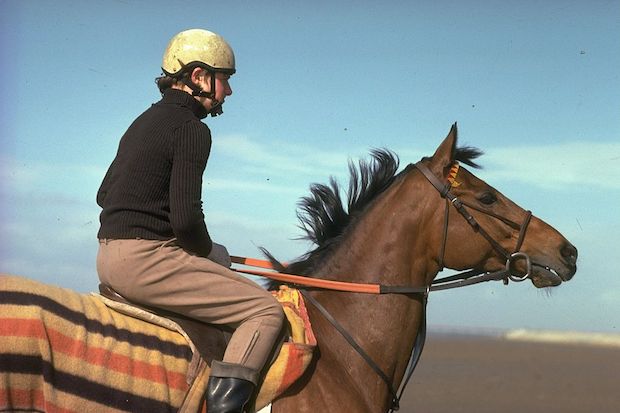My first ever goldfish was called Red Rum. I won it (him?) at a point to point, so to a seven-year-old me, the name seemed utterly logical. I didn’t know anything about Red Rum – only that he was a racehorse. I did know his name however; and I don’t think I could have named many, or even any, other racehorses.
That’s the power of Red Rum – arguably this country’s most famous race horse – and this year marks the fortieth anniversary of his historic third win in the Grand National. He’s the only horse to ever have won the race three times, and when, aged 12, he returned to the track in 1977 for another go – having come second in ’75 and ’76 – many people thought he was too old to win. But he proved them all wrong.
Watching that 1977 race on YouTube, it’s fascinating to see how the race has changed. Campaigners against the race complain about the fact that horses often fall and injure themselves – sometimes fatally – at the challenging Aintree fences. But in 2011 and 2012 a safety review meant that many of the jumps and drops were made smaller, changes were made in the hope of slowing down the speed of the start of the race, and some of the landings were also levelled out. Decreasing the size of the fences and ditches hasn’t necessarily fixed the issue; some people in racing believe that this simply makes the race faster – although the 2015 and 2016 races saw no equine fatalities.
Fairy tales like Red Rum’s are part of what make the National such a popular race. It’s so hard to predict that the favourite very rarely wins, and there’s always an influx of feel-good stories in the run-up to the race. This year the chosen horse is One for Arthur – an eight-year-old owned by two ‘golfing widows’ who decided they needed their own form of entertainment while their husbands were off having a round of golf. If he wins, he’ll be only the fourth winner trained by a woman, and the first Scottish winner since 1979.
But Red Rum’s story is still the archetypal Grand National story; in fact if he hadn’t completed his triple, the race might not exist today. In the ‘70s, Aintree was struggling and the 1975 race saw the smallest crowds in living memory, after the new course owner tripled the admissions price. But the public loved the story of Red Rum and his trainer, Ginger McCain, and many credit the pair for getting the country behind the fundraising appeal that saved both the racecourse and the National. As Peter O’Sullevan, the so-called ‘voice of racing’, put it when Ginger died in 2011:
‘He will always be remembered for Red Rum and rightly so because he and the horse appeared absolutely at the right time and were very much instrumental in saving the National at a period when it was very much in peril.’
So when you watch today’s race, and see the horses cross the winning post where he is buried, have a thought for ‘Rummy’ – because without him, we might not have today’s race at all.







Comments